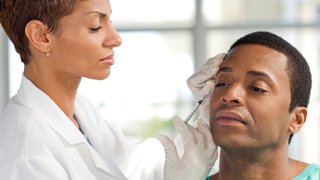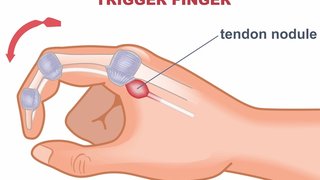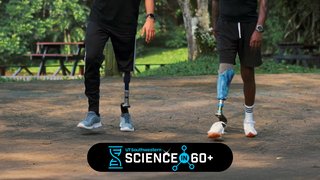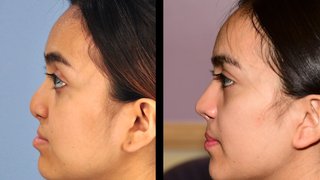What is Ramsay Hunt syndrome, the virus affecting Justin Bieber’s face?
June 29, 2022

In June 2022, pop star Justin Bieber posted an Instagram video to announce to his 245 million followers that he had been diagnosed with Ramsay Hunt syndrome – a rare neurological disorder that paralyzes the facial nerve and can abruptly take away a patient’s ability to smile, raise an eyebrow, or even blink on one side of their face.
Affecting only 5 in 100,000 people in the U.S. each year, Ramsay Hunt syndrome is so rare it is often misdiagnosed as Bell’s palsy, an umbrella term for facial paralysis without an identified cause.
Ramsay Hunt originates from reactivation of the varicella-zoster virus, which causes chickenpox in children and shingles in adults. When the virus infects the facial nerve, it can influence key muscles that control the eye (closure), mouth (smile), and nose (breathing) and cause temporary – sometimes permanent – paralysis on one side of the face.
Ramsay Hunt Syndrome symptoms
Although classically described as facial paralysis with the appearance of a blister-like rash in the ear or mouth, many patients don’t experience this rash. Other symptoms vary and can include:
- Hearing loss
- Nausea
- Rapid, involuntary eye movements
- Ringing in the ears
- Vertigo (a spinning sensation)
- Mental health concerns such as low self-esteem or depression
Unfortunately, misdiagnosis can cost patients precious time.
While some medical centers see a few patients with facial palsy each year, UT Southwestern cares for three to four each week. We are among the top centers globally for facial paralysis diagnosis and management – our plastic surgeons are frequently consulted in the most complex cases, and our researchers are on the leading edge of treatments for this devastating condition.
Facial paralysis treatment from an expert team
Outcomes for patients diagnosed with Ramsay Hunt syndrome vary. Some make a full recovery while others are left with permanent palsy. Usually, the paralysis is worst at its onset, frequently improving over the next 3-6 months.
In some cases, there is no improvement, and in others it plateaus at a certain point. Finally, we also see some patients who improve and then develop synkinesis, which is when some areas of the face are very tight, others are weak, and facial movements are uncoordinated.
Over the course of the paralysis, you may receive treatment from several specialists in addition to our plastic surgery facial nerve experts:
- Infectious diseases experts, who can help manage your reaction to viral infections and suggest treatments to potentially reduce the risk of recurrence.
- Otolaryngologist / Neurotologist, an ear, nose, and throat specialist or a surgeon who specializes in the skull base, may evaluate your hearing and assess whether lesions or growths might be causing the facial paralysis.
- Facial nerve physical therapists are an integral part of recovery.
- Psychologists or counselors can help patients who develop depression and anxiety when coping with facial paralysis.
UT Southwestern brings together all these experts in the management of Ramsay Hunt syndrome. Led by our world-class plastic surgery microsurgeons, the multidisciplinary facial paralysis team will help you understand this rare condition, and guide decisions about your care.
Ramsay Hunt syndrome recovery timelines
As a rule of thumb, most patients with Ramsay Hunt recover, so any treatment plan must include an initial observation period. Depending on the patient’s level of recovery in the first six months, a treatment plan is devised that may range from no treatment to surgical options.
Early communication with a facial nerve specialist will help establish an effective timeline for treatment, if needed.
One to three months after symptom onset
Most patients will be seen in their local emergency room or by their primary care physician when they first experience facial paralysis. After an evaluation, which may include a CT scan to rule out a stroke, patient are prescribed antiviral and steroid medications to reduce inflammation and swelling of the affected nerve.
Over the next three months, we recommend a watchful waiting approach for most patients with an emphasis of protecting the eye with drops during the daytime and ointment before bedtime.
At three months, many patients notice improvement. The doctor will check for subtle signs of nerve recovery, such as twitches in the facial muscles, and will keep a careful record of your progress.
If we do not observe symptom improvement by three months, we will recommend a follow-up at six months for additional observation. The most important thing to emphasize is continued protection of the eye with drops and ointment.
Three to six months
During this period, we can gain crucial information from simple and thorough facial exams. Patients will either recover, continue to have weak facial muscles, or develop synkinesis, which indicates a partial but not completely normal recovery.
With synkinesis, facial movements on the affected side become uncoordinated. Some areas of the face remain weak while others become overly tight, limiting the patient’s ability to smile, causing tightness around the eye, and creating a tight and swollen-looking cheek. If a patient starts to show signs of synkinesis, we will develop a treatment strategy to rebalance the face and improve muscle function.
If a patient shows no signs of recovery and remains paralyzed or very weak at six months, we generally start discussing surgical options. In select cases, we may wait a few more months because some patients, especially older patients, may take longer to recover. Waiting also provides a few more months to consider surgical options and see if a patient is showing any signs of recovery.
Six months to a year
At this point, we can typically anticipate the direction of a patient’s paralysis, but it doesn’t necessarily mean surgery will be our only treatment option.
For most patients with synkinesis, treatment may combine physical therapy and Botox injections in specific facial muscles. Surgical treatments, if necessary, may involve selective myectomies (cutting some small dysfunctional muscles), selective neurectomies (cutting dysfunctional facial nerve branches), and occasionally some additional procedures, which should be discussed on a case-to-case basis.
To assess whether patients are good candidates for surgery, we’ll often perform very selective muscle blocks to predict surgical outcomes and create a distinctive surgical plan for the patient.

In a study published in March 2021, Dr. Rozen and his team showed that blocking the depressor anguli oris muscle, which pulls down the corner of the mouth, can improve resting facial symmetry and balance smile symmetry for a few hours. Recently, in an additional publication in 2022, we demonstrated how these blocks can help predict surgical outcomes.
In cases where complete paralysis continues, the main strategy is to try to salvage function by rewiring the nerve in the face with neurotization techniques.
Recently, our facial palsy team developed a leading-edge technique to reinnervate the muscles around the eye, allowing patients to improve their blink and voluntarily close their eyelids and protect their corneas. At 21 months after surgery, 89% of patients could fully close their eyes, compared with 7% who received standard treatment of placing a gold weight in the eyelid to aid closure. Even more importantly, the corneas of patients who underwent reinnervation around the eye had significantly fewer erosions and were healthier. We are one of the few institutions in the world performing this procedure.
If patients have complete paralysis for more than 18 months, generally it is best to perform a muscle transplant with new vessels and nerves to restore some of the facial function. This can be discussed in depth during a visit.
Recurrence
Because Ramsay Hunt syndrome is caused by a virus, the virus may lay dormant for several years and become active again. Recurrent infections may result in shingles in adults or facial palsy on the same or other side of the face. While recurrence cannot be prevented, a facial palsy specialist can help you navigate the unique challenges of subsequent paralysis.
Related reading: How Susan got her smile back: A journey overcoming facial paralysis
The importance of a smile
By sharing his diagnosis of Ramsay Hunt syndrome, Mr. Bieber is raising awareness of this rare and potentially devastating condition – both for the public and for healthcare providers who might be less familiar it.
Facial palsy almost always appears suddenly, so it is important to talk with a doctor as soon as possible. If little to no recovery is observed in the first three months, ask for a referral to a facial paralysis specialist. And if you are told there is no treatment for your facial paralysis, seek a second opinion. If facial weakness evolves slowly, please seek out a facial nerve expert immediately. The causes for slow-evolving paralysis are very different and need a thorough evaluation.
While there is no instant cure for Ramsay Hunt syndrome, an expert can help you navigate the symptoms, emotional challenges, and treatment of facial palsy.
To talk with a facial paralysis expert, call 214-645-2353 or request an appointment online.











